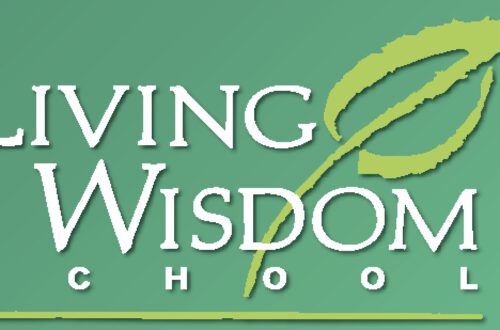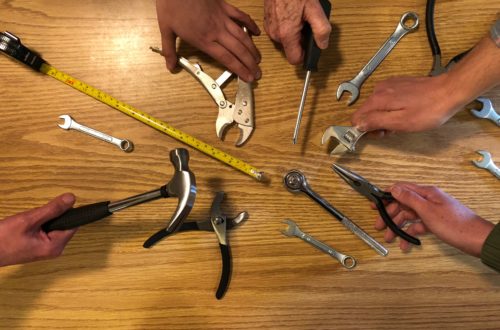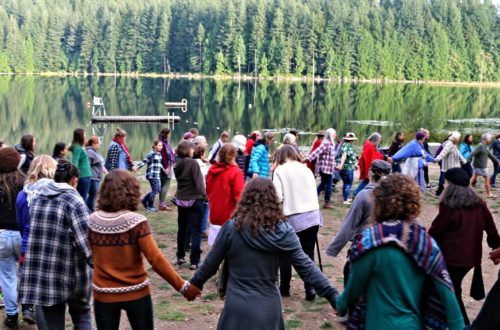(or Living la Vida Local)
“Community’s not a sentiment. It has to do with necessity – with people needing each other. If you allow the larger industrial system to remove the pattern of needs that is the force holding people together, then you lose the community.” –Wendell Berry
Well, this essay is different than what I had planned to write before Corona Virus became a household word and worldwide concern. What struck me is that in this time when so much has changed so rapidly, we have the opportunity to notice what we take for granted, how attached we are to certain things, and what is relatively easy to let go of. In a Zoom conversation with some young women friends, several of them said they hoped that life stays simpler and calmer than pre-COVID-19. Another thing that I have seen and find very sweet is so many more parents and young children are out walking or riding bikes together because they have the time to do it.
What comes to my mind is our interdependence on each other, even when it’s not apparent. As Wendell Berry expressed in the opening above, we need and rely on members of our community – the grocery workers, the health care workers, the teachers, the neighbors, the planners, the farmers and field workers, the truck drivers, the people who sew masks, and so many more. Take a moment to imagine every one of the people whose life intersects with your life. What is our obligation to those around us?
Not long ago, I opened up my high school yearbook to look up a classmate’s photo. At the back of the book are photo advertisements for the local businesses which donated to support the book’s publication; there were no national chains in Corvallis at the time. Those advertisers supported the high school because the community supported the businesses – it was a mutually beneficial relationship. Less than a hundred years ago, our interconnectedness was more evident because populations were smaller, and transportation options were limited to feet and horses. Cooperation amongst members of a community was essential to help the group survive and flourish. Perhaps people didn’t necessarily befriend each other, but they understood that each person had a role in taking care of the commons.
People can better see the influence and power of their collective action at the community level when they are well connected by neighborhood, relationships, and infrastructure. This builds supportive, interdependent communities, and a sense of caring. It makes a difference when you support your local businesses and the people in the community who own them and are employed by them. “Going local does not mean walling off the outside world. It means nurturing locally owned businesses that use local resources sustainably, employ local workers at decent wages, and serve primarily local consumers. It means becoming more self-sufficient and less dependent on imports. Control moves from the boardrooms of distant corporations and back into the community where it belongs.” (Shuman 2000)
It’s worth pausing to consider what we support with our money. Do we interact with people face-to-face (while wearing masks at the moment)? Online ordering removes personal contact. Local businesses are owned by people who live in this community, are less likely to leave, and are more invested in the community’s welfare and future. As local jobs move out, social disintegration follows. Just look at the examples of big box stores moving into small towns, forcing the small local businesses to close. What happens when the big box store closes? How far will the town’s residents have to go to make their purchases? Local economies build human relationships, increase wealth instead of money, and reduce environmental harm.
In the July/August 2020 issue of Sierra magazine, they stated that they were “building a bigger ‘we’ with organizations that share our vision for a more sustainable future.” What a smart approach to solving the problems we see now. We need to move past the “rugged individualism” myth that individuals must be totally self-reliant and independent from the outside, usually government assistance and safety nets. We can all concentrate on “building a bigger ‘we’ since we are all in this situation. Coming together in collaboration and mutual assistance is what serves all of us best.
I recently heard David Korten, author of The Great Turning, say that studies have shown that humans derive their greatest satisfaction from knowing they have been of service to another human being. This is the perfect time to embrace our fundamental desire to be of help. A young friend said that when the COVID self-isolating began, people in her neighborhood checked in with each other to ensure everyone had what they needed. On our local NextDoor.com group and on Facebook, there are so many examples of people sending money to the food banks, reminding each other to support local restaurants, and neighbors sharing resources and kindnesses. I’m sure you can think of other examples of creative ways people have found to cope with the changes that have come about as a result of the pandemic.
We must work on getting systems solutions in place now, so we are more prepared for the next disruption. Otherwise, we will respond in the same haphazard way that failed us before. By examining the problems and shortfalls that were experienced in this pandemic, we can establish networks of cooperation and collaboration and share resources and skills much in the manner of Transition Towns. Originally, they were conceived of as a way to “proactively prepare for an oil-scarce future in a warming world by reducing their dependence on fossil fuels and helping mitigate climate change by re-localizing, shifting production closer to home and creating functioning communities with the idea that strong neighborhood networks will help towns to weather future energy shocks and economic instability by creating a strong, connected, self-sufficient community.”
When you think of a self-sufficient community, what comes to mind? The more needs that can be taken care of locally, the better the community will be able to address disruptions and disturbances. And your voice will carry farther. For myself, food is high on my list of needs. We are fortunate to live where food is locally grown and abundant, so visit your local farmers market. Get to know the farmers as individuals and thank them for their hard work. They build local food systems and community wealth.
For some people, convenience is their main priority. I would ask them to give some thought to supporting these local services and businesses. Staying close by encourages more local attachments and relationships:
• Community gardens
• Farmers markets
• Local bank or credit union
• Local media
• Local food co-op
• Patronize local small restaurants and cafes
“A needs-based economy, or localization, in accordance with the laws of Nature is the only remedy to the problems we face.” –Ven. Samdhong Rinpoche, former Prime Minister, Tibetan government-in-exile
Take a look (4.57 min.) at localization here: https://www.youtube.com/watch?v=OVVZVqJm6Vo
Transition Towns: https://www.everythingconnects.org/transition-towns.html
Betty Shelley, and her husband, Jon, have filled only one 35-gallon can of garbage per year since 2006. In her three-session class, “Less is More: Getting to One Can of Garbage a Year”, Betty Shelley teaches her techniques for reducing waste.
For more info: www.reduceyourwasteproject.com






